Genre: Platform Developer: Sonic Team Publisher: Sega Ent. Players: 1 Released: 1999
The Sonic series had its 30th anniversary earlier this year. It celebrated its tenth the same year as the release of Sonic Adventure 2 on Dreamcast and its 20th with the multiplatform release of Sonic Generations. The latter was supposed to contrast between the 2D and 3D eras but the 3D era really began just over four years after the release of Sonic & Knuckles and still within the franchise’s first decade. Yet, even today there is a strong line drawn between the mainline games before Sonic Adventure and those that followed.
Sonic Adventure was a launch title as well as the best-selling game in the short retail life of the Dreamcast. It is also the game that brought the main series into 3D (I have to distinguish here because Sonic had already been seen in 3D in a few previous games that are better classified as spin-offs). Sonic Adventure looked and played much better than any of these efforts and I can still recall being wowed seeing the game in action at my local EB Games back in 1999.
These positive initial impressions on a new console probably have a lot to do with the acclaim the game received at launch and the far poorer critical legacy it has seen in retrospectives and reviews since. When first playing the opening and now iconic action stage, Emerald Coast, it is understandable why early critics were so positive. There is a lot more to the game than this though and the high brought on by the opening is soon brought much lower.
The first aspect is admittedly experienced prior to Emerald Coast. This is the Station Square overworld, but the first jaunt is much shorter than those that follow. These overworld areas are where you will first experience the most notorious problem with the game, and that is the camera. It is controlled horizontally using the triggers, but sometimes it is fixed. In one case, it is frustrating and the other it is often disorientating. This is not a complaint that comes from the smoother camera control today, as it had already been done better in previous games. In most of the action stages the camera is not a problem — especially when playing as Sonic, but not so with other characters, which brings me to the next problem.
Additional characters were not new to the Sonic series, as almost every sequel introduced someone new. However, Sonic Adventure has six playable characters with distinct stories. When I first played the game, I was quite content to play as Sonic and leave the rest, but this was not something I felt was enough to properly review the game. This also meant I was coming to Sonic Adventure fresh and without any prior assumptions.
Sonic 3 & Knuckles introduced a parallel story with Knuckles as well as some branching paths. Sonic Adventure does much the same with the six characters, including Tails, Knuckles, Amy, and two new characters: Big the Cat and E-102 or “Gamma,” a robot created by Dr Robotnik who following this game was universally known as “Eggman.” These stories are all a considerable drop in quality from the first with Sonic and are all (sometimes mercifully), shorter. There is also a lot of repetition, with Tails and Knuckles having almost exactly the same boss encounters, and many story scenes are repeated. The differences generally don’t make for entertaining gameplay since they depart significantly from the more fast-paced gameplay found in the Sonic story. Tails mostly follows Sonic’s path, Knuckles has to search around for pieces of the Master Chaos Emerald, and Amy has to run away from a pursuing robot and escape each action stage on a large balloon like a cute version of Resident Evil 3: Nemesis.
The levels get truly bizarre with Big the Cat who has to go fishing for his pet frog across multiple action stages. His amphibious friend is actually a slippery MacGuffin in wider narrative. Gamma, after being charmed by Amy, decides to join with the rest of the heroes and turns on his robotic brethren. If all of this seems convoluted, believe me it is. Indeed, this is an apt description for the games design in general, which seems to be glued together with a smattering of ideas and no sense of direction. All of these stories center around Robotnik’s plot to use a magical being called Chaos that has roots from the ancient Echidnas that Knuckles descends from. Chaos is the first boss encounter with the game, and the player never gets a sense at first or in any following encounters that he is a genuine threat until the game’s climax.
The best of the game is experienced through Sonic’s story, but there are a few unique areas for other characters. The problem is that to unlock the final story campaign as Sonic, you have to play through as every character. It also means seeing the game’s ending credits a total of seven times and many repeated story scenes and areas. The story is not even at the level of a Saturday morning cartoon and the genuinely laughable voice-acting doesn’t help. Whether you understand it or not, the game is much better played in Japanese.
Sonic Adventure also includes some mini-games, the most prominent of which is the Chao Garden. This lets you raise little creatures for races quite similar to the Tamagotchi digital pets that were popular at the time and are still around today. This was integrated well with the VMU, and in the days before smartphones was a clever feature that allowed gaming on the go. This is not exactly fitting with the series, but it was a great bonus and is still fondly remembered by many. It was expanded in the sequel and though it was not something I ever found interesting, I could at least appreciate it.
The soundtrack probably faired best of all and is the aspect that has best survived the ravages of time. I personally didn’t like the punk rock direction the series took with many tracks, but there are still plenty of upbeat compositions that keep with the original series. There are even a few jingles and tracks that were brought back, most notably from Sonic 3D Blast on the Mega Drive. The areas are all new, with the exception of Icecap but bafflingly the composers didn’t remix one of the best tunes from Sonic the Hedgehog 3.
The game’s visuals were very impressive on release, and the Dreamcast version still holds up well due to some questionable visual changes made in ports that followed. There is even an impressive overhaul mod available on PC that restores the look found on Dreamcast while including subsequent and modern improvements. Time has not been kind to the game on the whole though, and the character mouth movements in particular are just as ridiculous as the voices coming out.
Sonic Adventure has many of the markings of the flurry of invention and innovation seen during the life of the Dreamcast when it really needed a more traditional focus. A fishing game in Sonic seems rather unnecessary on a console that had multiple fishing games, as well as a unique fishing controller. The game could have kept the Chao Garden but removed some of the character campaigns in order to polish the rest of the main story too. It began a tradition in many Sonic games that followed where a new gimmick was added and often to the detriment of the games as a whole.
Despite all this criticism, Sonic Adventure did have a big influence on the future direction of the series and is still fondly remembered by many today. It remains fun to take Sonic through Emerald Coast or Speed City, and these action stages are where the game is best enjoyed. To this day, I don’t believe any Sonic game has brought the right mix of exhilarating spectacle and exploration of the 16-bit titles, but Sonic Adventure did give the first glimpse of what could be and in some ways succeeded. It can also be appreciated for its ambitious and chaotic design when so many games today seem to be developed with a checklist from a committee. It is definitely one Dreamcast owners should have since it is widely available, and there are sparks of brilliance to be found even twenty years later.
SCORE: 7 out of 10

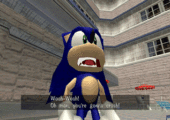
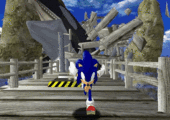
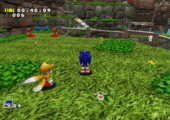
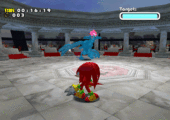
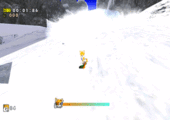
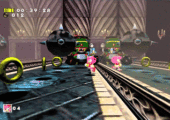
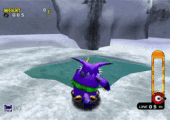
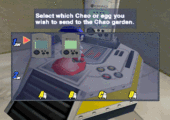
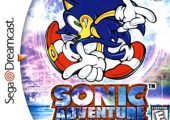
Recent Comments